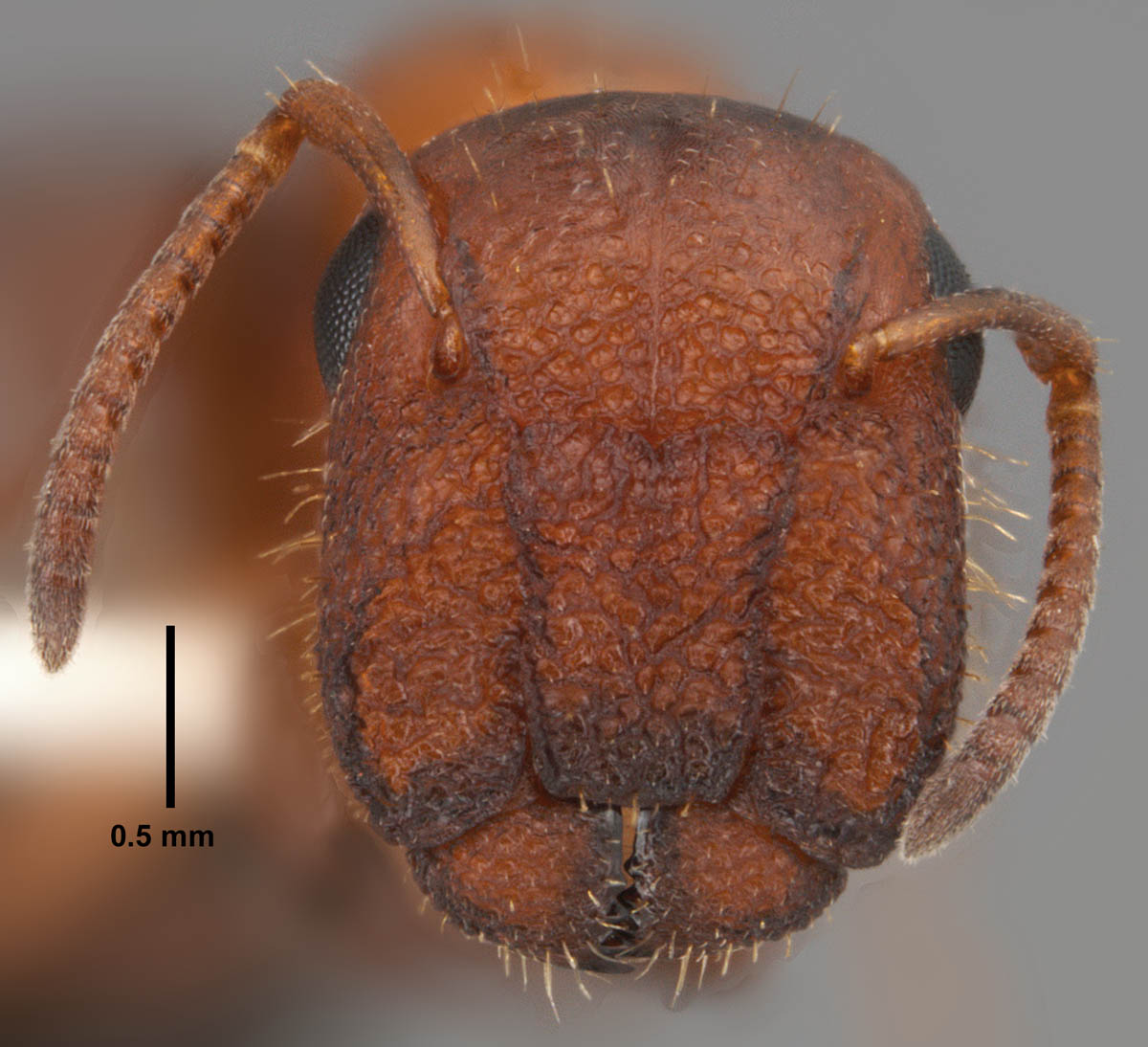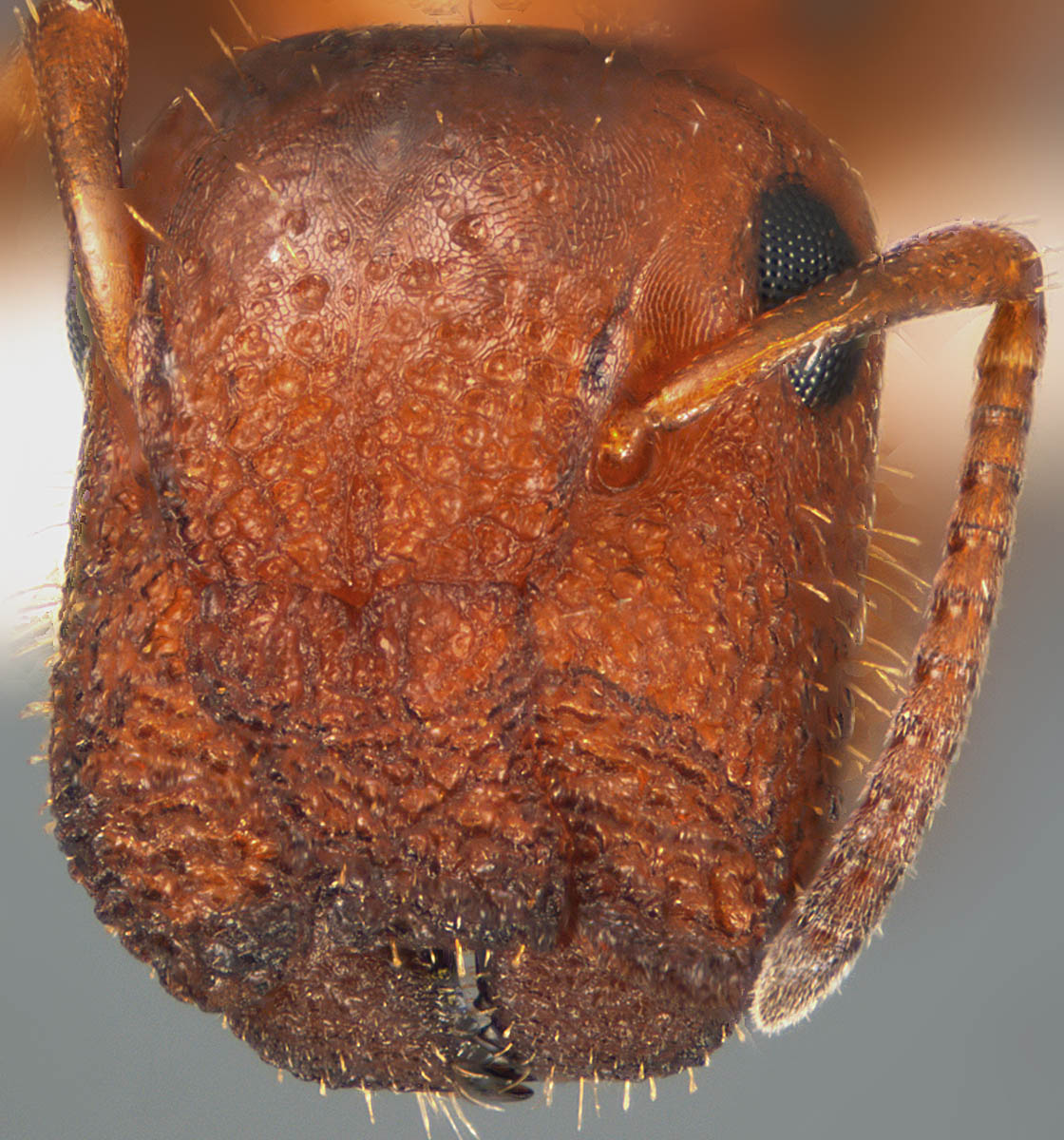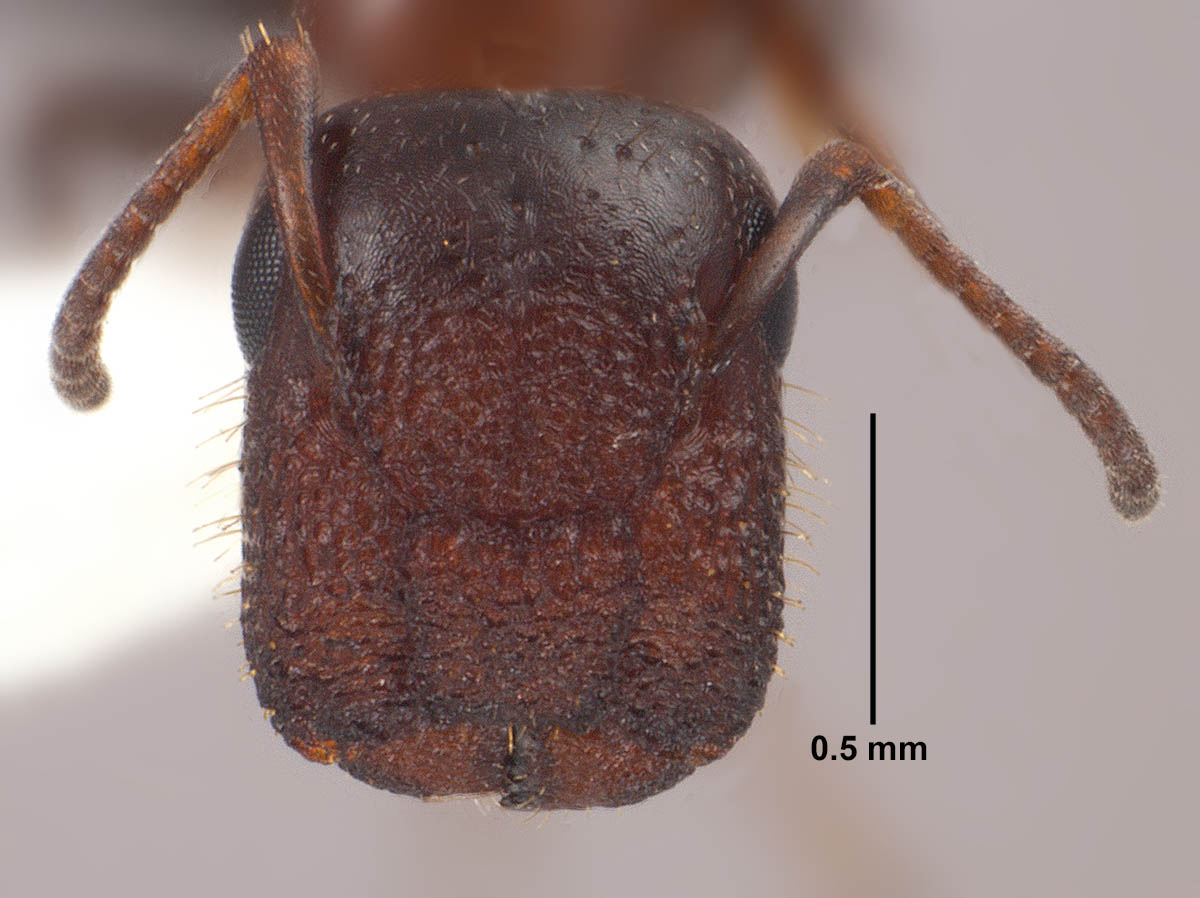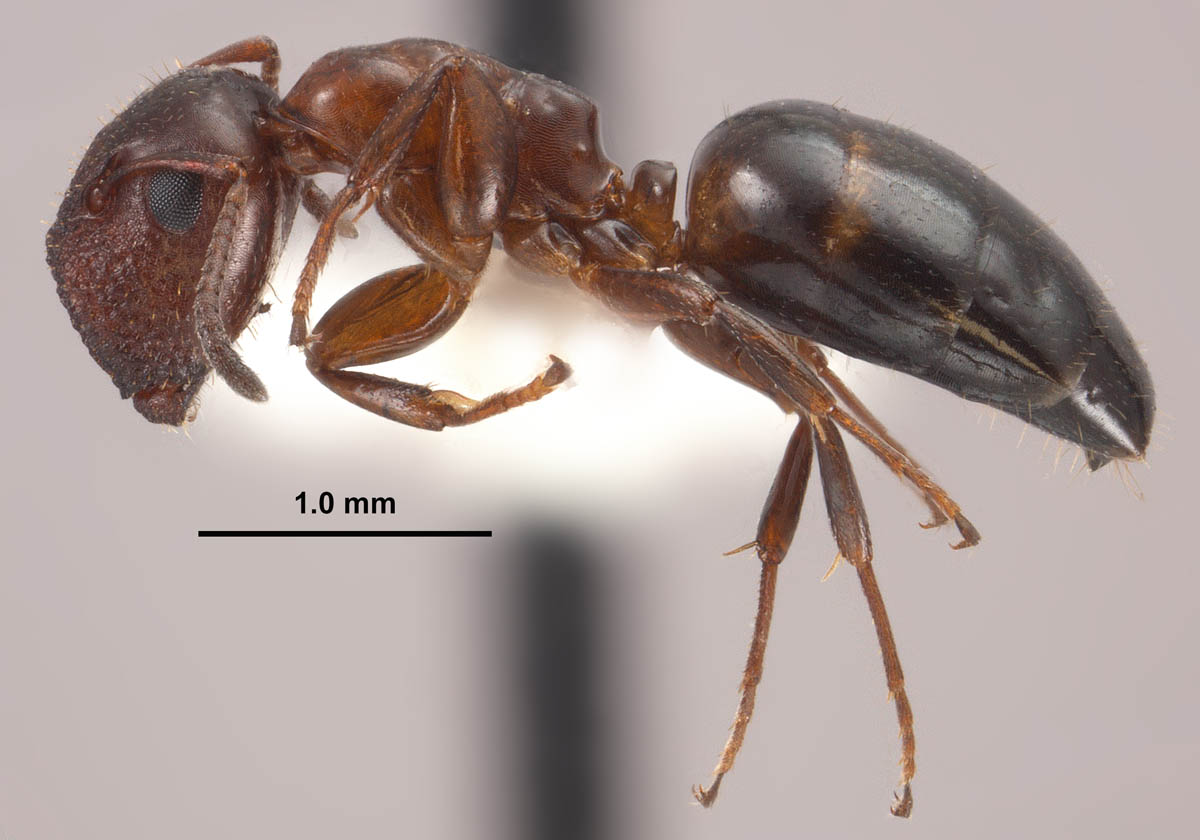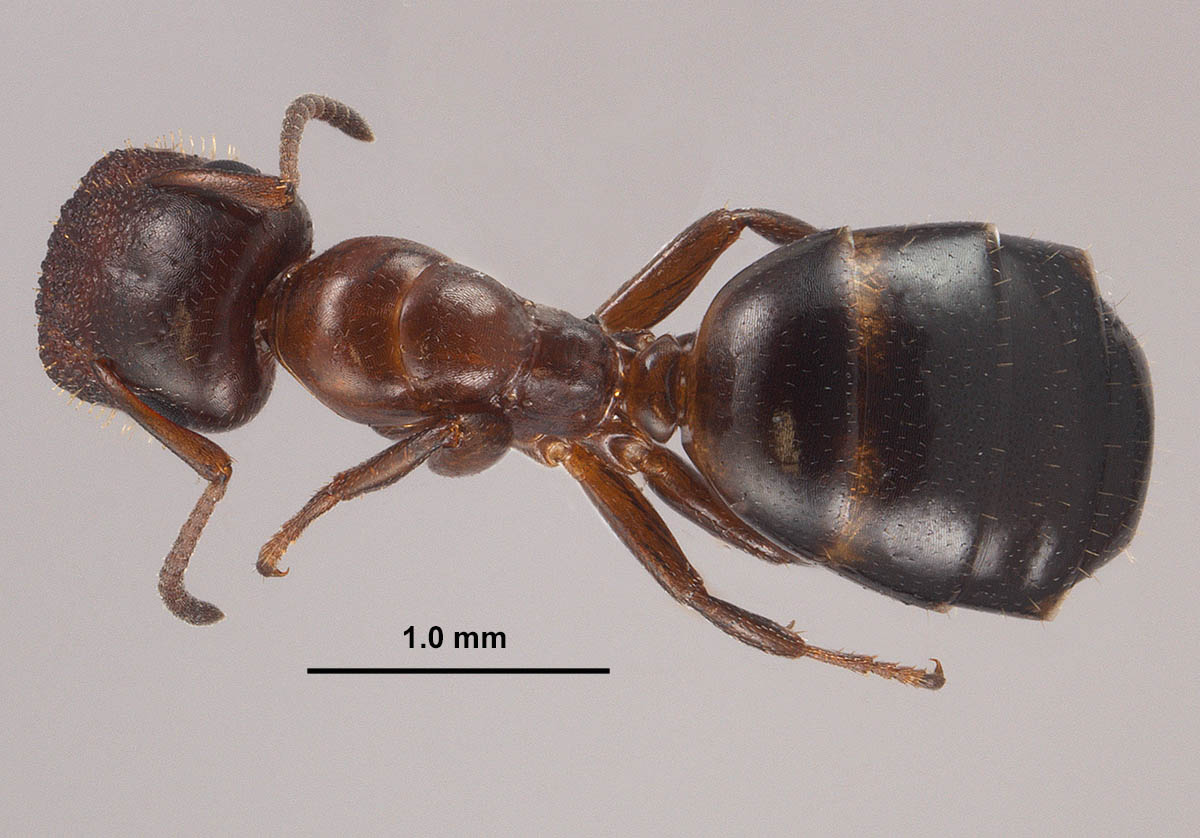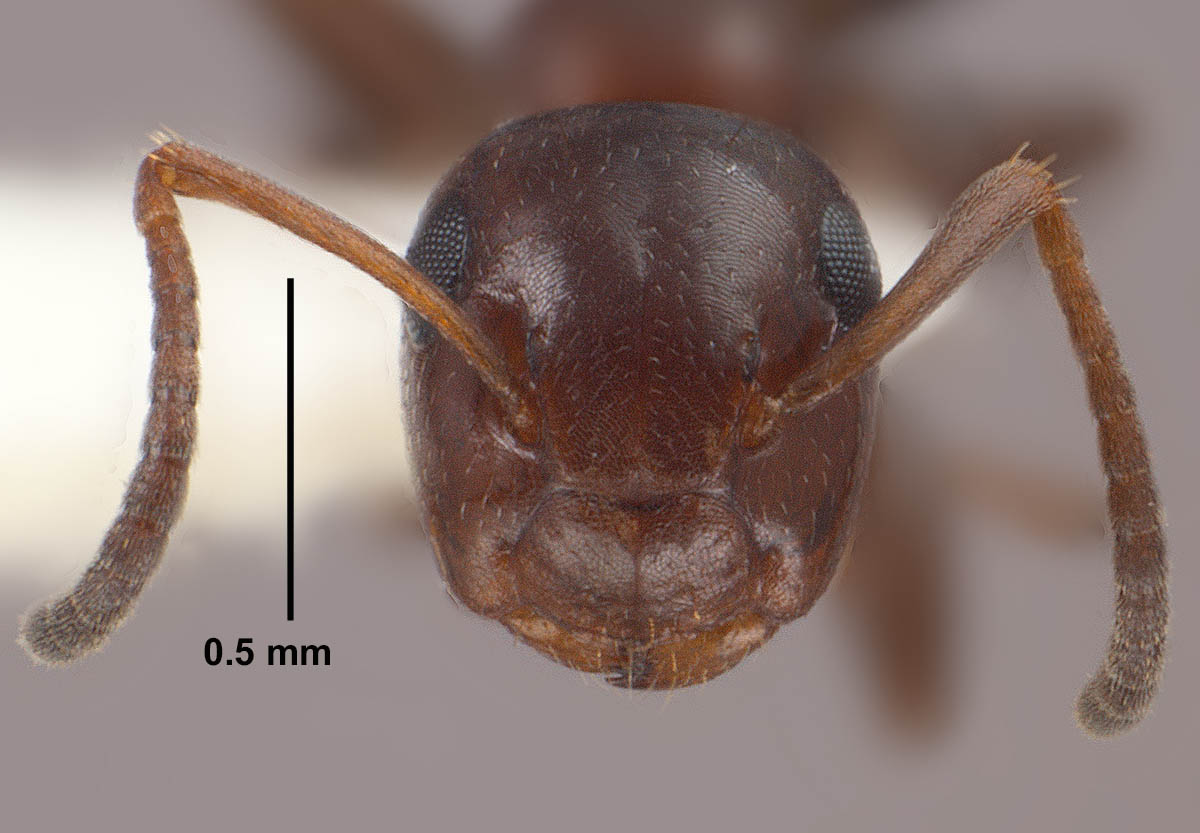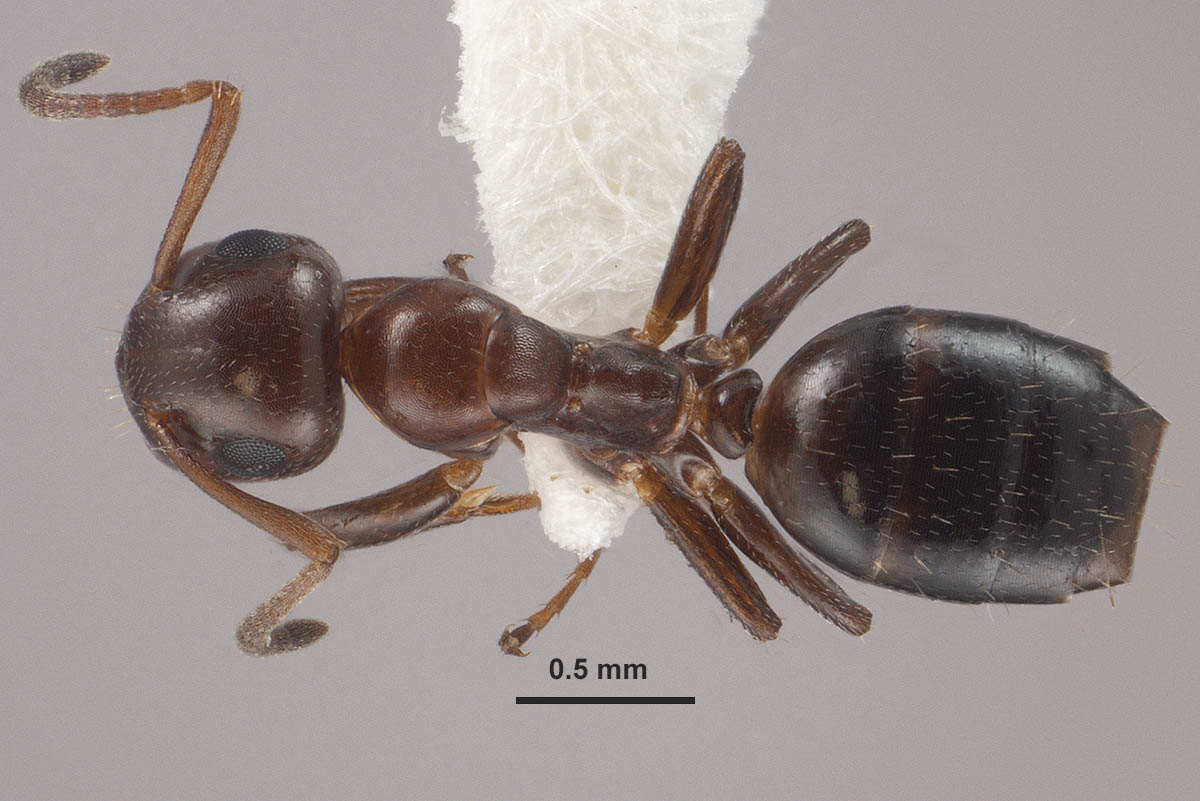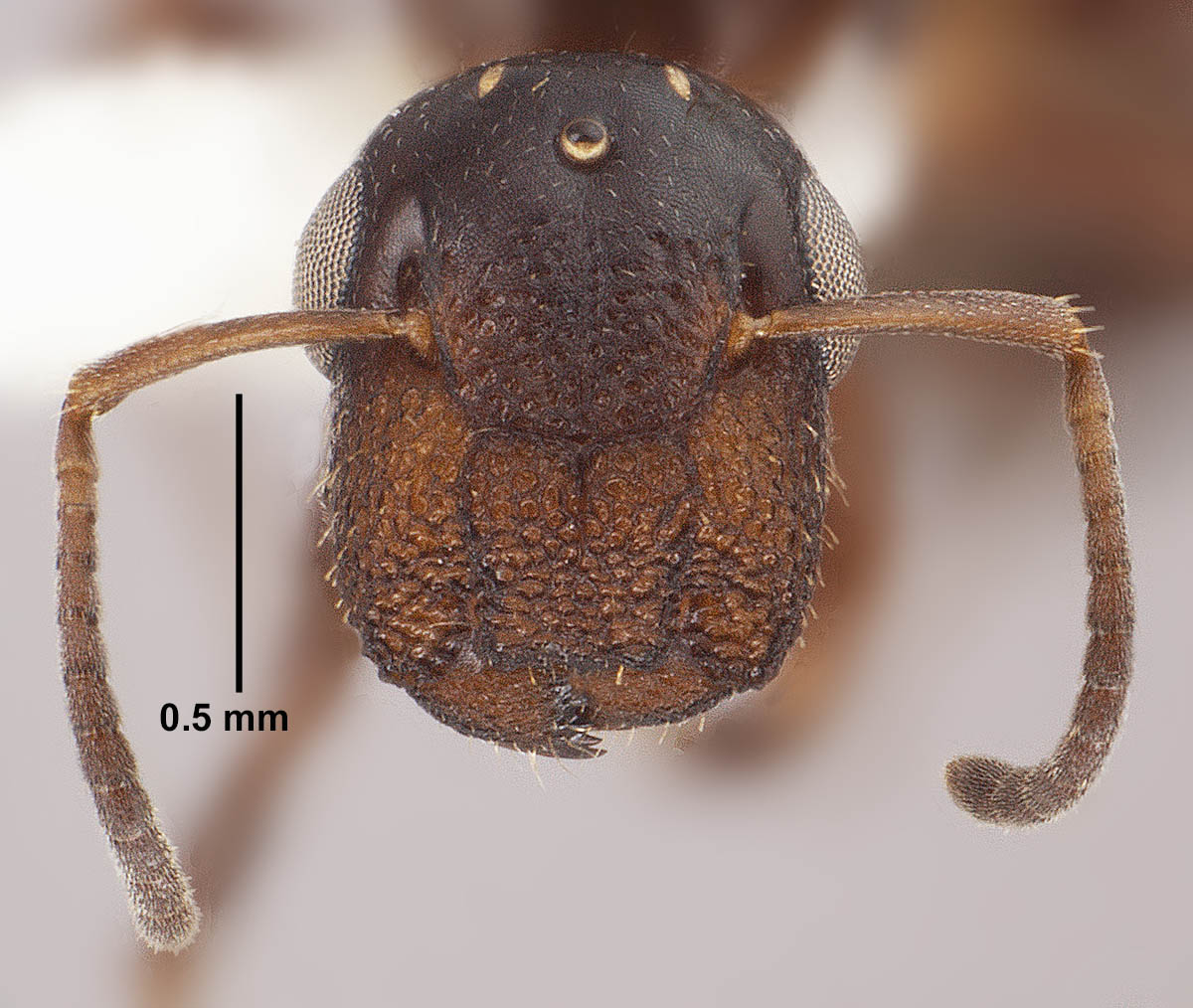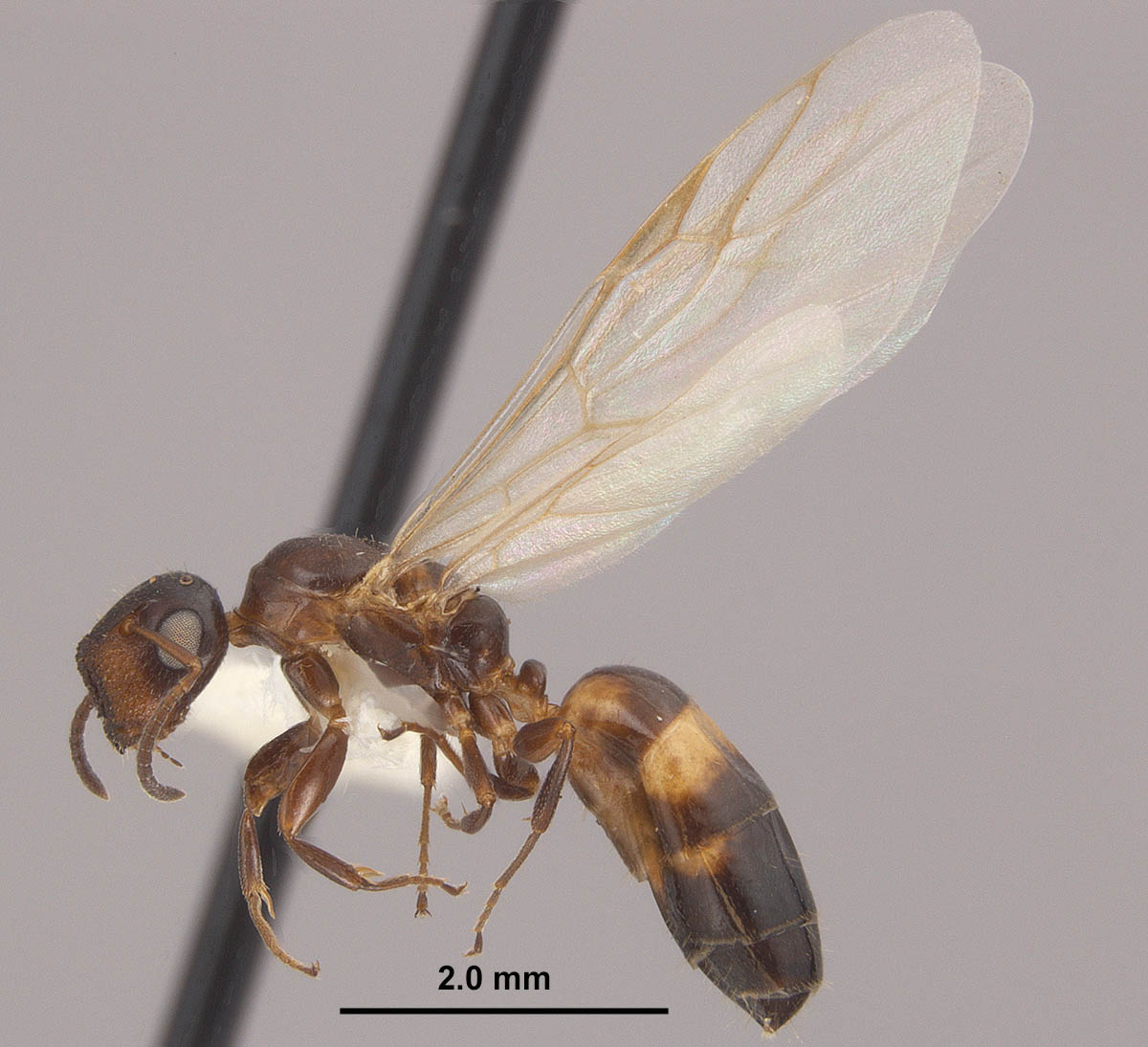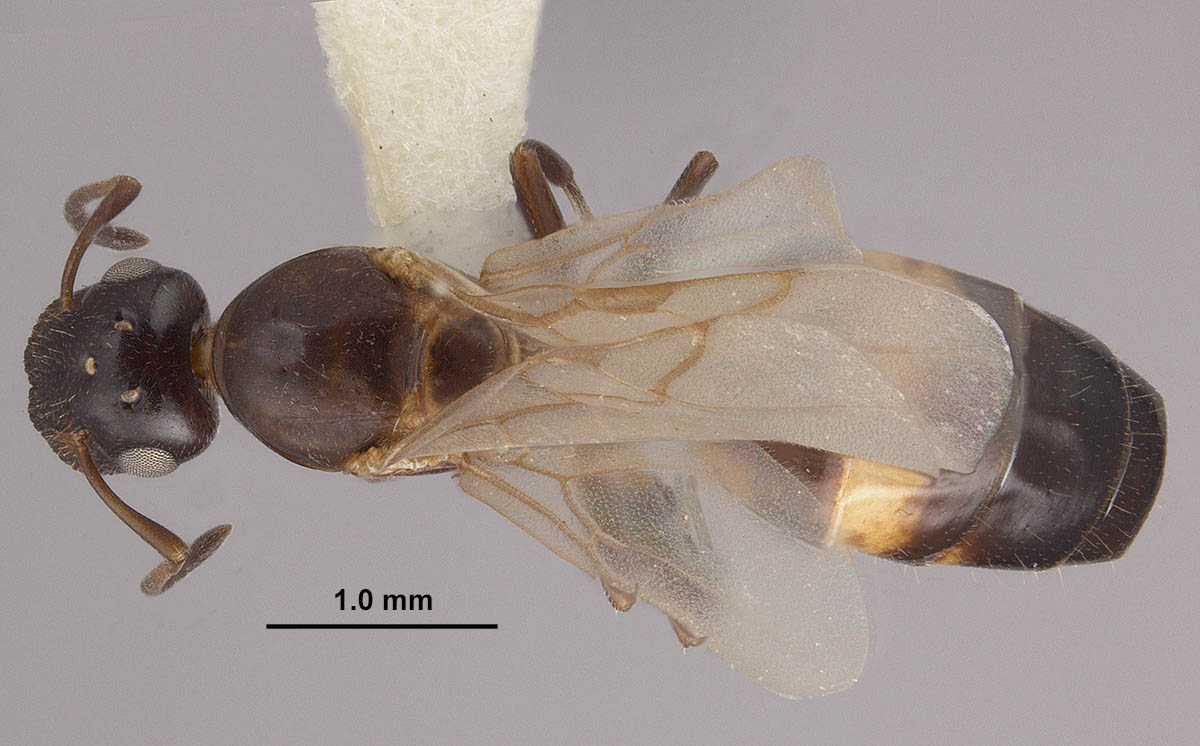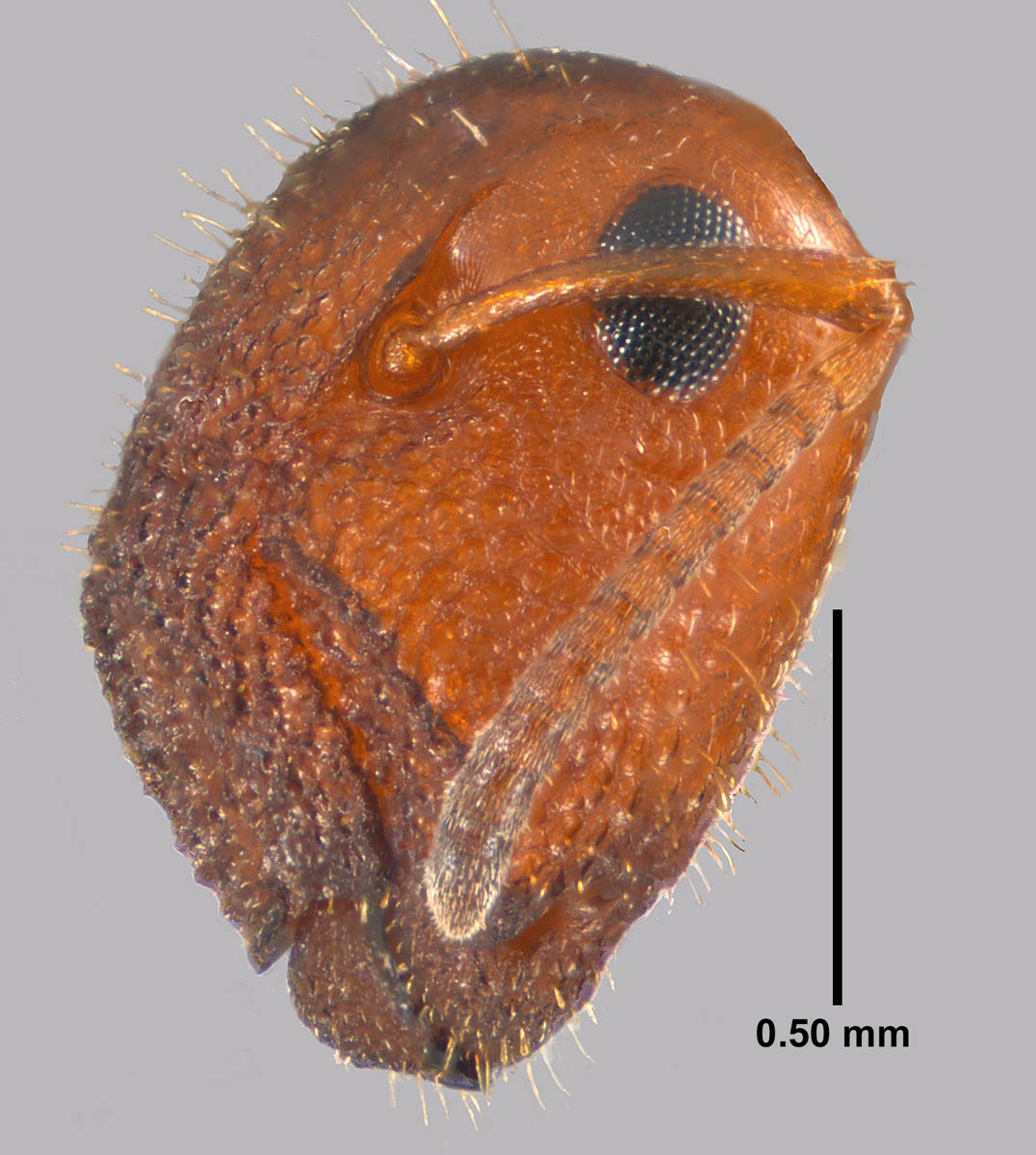Subfamily FORMICINAE Author: Joe A. MacGown |
||
Colobopsis obliqua, full face view of a major worker (MS, Oktibbeha Co.) |
Colobopsis obliqua, angled view of the head of a major worker (MS, Oktibbeha Co.) (photo by Joe A. MacGown) |
Colobopsis obliqua, close up of the clypeus and mandibles of a major worker (MS, Oktibbeha Co.) (photo by Joe A. MacGown) |
Colobopsis obliqua, full face view of a major worker (MS, Winston Co.) (photo by Joe A. MacGown) |
Colobopsis obliqua, lateral view of a major worker (MS, Winston Co.) (photo by Joe A. MacGown) |
Colobopsis obliqua, dorsal view of a major worker (MS, Winston Co.) (photo by Joe A. MacGown) |
Colobopsis obliqua, full face view of a minor worker (MS, Winston Co.) (photo by Joe A. MacGown) |
Colobopsis obliqua, lateral view of a minor worker (MS, Winston Co.) (photo by Joe A. MacGown) |
Colobopsis obliqua, dorsal view of a minor worker (MS, Winston Co.) (photo by Joe A. MacGown) |
Colobopsis obliqua, full face view of a queen (MS, Oktibbeha Co.) (photo by Joe A. MacGown) |
Colobopsis obliqua, lateral view of an alate queen (MS, Oktibbeha Co.) (photo by Joe A. MacGown) |
Colobopsis obliqua, dorsal view of a alate queen (MS, Oktibbeha Co.) (photo by Joe A. MacGown) |
Colobopsis obliqua, angled view of the head of a major worker (MS, Oktibbeha Co.) (photo by Joe A. MacGown) |
||
Members of the genus Colobopsis can be recognized by the unusual modifications of the heads of both the major workers and queens which are severely truncated in the anterior third. This phragmotic condition enables the major workers to serve as living doors to their nests which are in living or dead twigs, stems, and some galls. Colobopsis obliquus is a relatively small Colobopisis species with majors ranging in length from 3.5 to 3.75 mm. The angle of the truncated area of head of majors is somewhat serrate in appearance. The truncated area of head of major and queen has very coarse and relatively large foveolate punctures or reticulations, which are also present on the sides of the head to the eyes. The alitrunk of the minors is dark reddish brown in color. This species most closely resembles C. impressus, by which is differs in having larger and sharper reticulations in the truncated area; more and coarser reticulations on the side of the head; and more erect hairs on the posterior area of the head. Additionally, the metanotal suture of the majors and minors of C. obliquus is only shallowly impressed and the propodeum of both majors and minors are angulate between the faces. Colobopsis mississippiensis is the only other species in this subgenus likely to be found in this area and it differs from C. obliquus by the majors having a sharp edged rim at the point where the side of the head meets the truncated face of the head. Colobopsis mississippiensis also differs by having very fine sculpture and even appearing somewhat shining in the truncated area of the head, rather than having coarse sculpture. Little is known about the biology of this species, but it is likely to have similar nesting habits as C. impressus and nest in a variety of twigs and branches, galls, vines, etc. I have collected it nesting in Berchemia scandens (rattan vine). |
||


